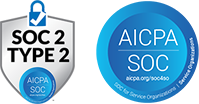What Is Career Pathing?
Career Pathing is the strategic mapping of roles, skills, and experiences that guide employees from their current position toward future opportunities. It defines clear progression routes—vertical, horizontal, or lattice—by combining performance data, skills assessments, and employee aspirations. Effective Career Pathing turns abstract goals into actionable milestones and learning plans.
Why Career Pathing Matters
Career Pathing drives engagement by showing staff how they can grow. When employees see defined routes and required qualifications—such as certifications or project milestones—they stay motivated and loyal. Clear paths also help HR forecast talent needs, closing skill gaps before they hamper business objectives.
Where Career Pathing Is Used
- Technology: Maps software-engineer levels from junior developer to architect.
- Healthcare: Defines clinical ladders for nurses—from staff nurse to nurse manager.
- Finance: Charts progression from analyst to portfolio manager with certification benchmarks.
- Retail & Hospitality: Outlines tracks from sales associate to store manager with performance targets.
- Manufacturing: Establishes technical ladders for operators, technicians, and supervisors.
Career Pathing Key Benefits
- Enhanced Retention: Visible growth routes reduce turnover by demonstrating investment in employees.
- Skill Alignment: Identifies and closes skill gaps through targeted training and on-the-job experiences.
- Succession Planning: Prepares internal candidates for critical roles, minimizing disruption when vacancies occur.
- Data-Driven Insights: Leverages performance and learning metrics to refine development plans.
- Employee Empowerment: Enables individuals to co-create Individual Development Plans (IDPs) and track progress.
Best Practices & Examples
- Individual Development Plans: Use SMART goals—Specific, Measurable, Achievable, Relevant, Time-bound—to structure career milestones.
- Mentorship & Sponsorship: Pair emerging talent with experienced leaders to guide skill development and network building.
- Rotational Programs: Rotate high-potential employees across departments to broaden skills and visibility.
- Learning Analytics: Monitor course completions and competency assessments to adjust career tracks dynamically.
- Internal Talent Marketplace: Publish open assignments and project gigs for employees to apply and gain new experiences.
Conclusion
Effective Career Pathing transforms employee aspirations into measurable outcomes. By mapping roles, defining skill requirements, and integrating development metrics, organizations build resilient talent pipelines, boost engagement, and align individual growth with strategic goals—fuelling sustained performance and innovation.
Career Pathing FAQs
Q: What is the meaning of career pathing?
Career Pathing is the process of defining and communicating clear progression routes within an organization. It outlines required skills, experiences, and milestones—enabling employees to see how to advance and helping HR align development with business strategy.
Q: What is an example of career pathing?
An example is a technology firm that defines levels from Junior Developer to Lead Architect. Each step lists required coding certifications, project leadership experiences, and mentorship milestones—ensuring transparent advancement criteria.
Q: What are the 4 types of career paths?
Common paths include:
- Vertical: Traditional promotion pipeline.
- Horizontal: Lateral moves to broaden skills.
- Lattice: Combines vertical and horizontal moves.
- Expert: Deep specialization without managerial duties.
Q: What is the importance of career pathing?
Career Pathing reduces turnover by showing clear growth opportunities, closes skill gaps with targeted training, and supports succession planning—aligning employee ambitions with organizational needs for sustained performance.



